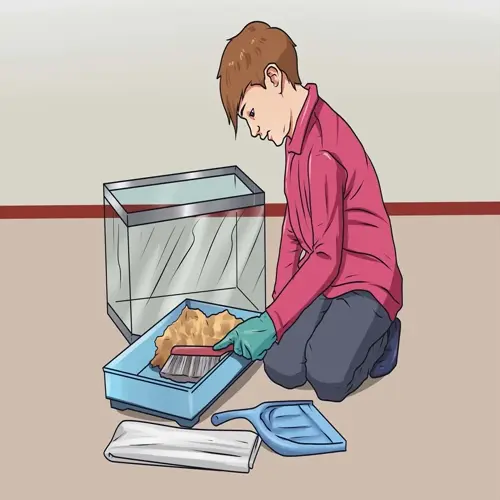10 Non Shedding Dog Breeds for Families

Written by
Wang Jiahao
Reviewed by
Prof. Henry Webster, Ph.D.Non shedding dog breeds require regular grooming despite minimal fur cleanup needs.
Poodles top family-friendly choices with intelligence and hypoallergenic curly coats.
Hairless breeds need sunscreen and moisturizing for sensitive skin protection.
Allergy sufferers must test reactions since no breed is 100% hypoallergenic.
Match breeds like Portuguese Water Dogs to active family lifestyles carefully.
Prioritize health screenings and genetic testing before adopting any breed.
Article Navigation
Non-shedding dog breeds make homes cleaner, as less fur floats around. These special dogs have hair that does not fall out seasonally, but continues to grow. They make life easier for people with allergies. I have seen how much difference it can make in a home with sensitive members of the family.
Remember that no dog is completely hypoallergenic. Every breed has some dander and saliva, which will cause reactions. During my years of experience with the breeds, I found that the responses to allergies vary greatly. It is very necessary to test one's individual reactions before adopting. This simple procedure avoids trouble later.
We will talk later about the best breeds for different lifestyles. You'll learn about grooming and allergy control, too. Choosing the right match for you makes pet ownership fun. I will share insights from working with hundreds of families making this important decision.
10 Non Shedding Dog Breeds
The list of non-shedding dog breeds begins with the popular Poodle. The Poodle comes in three sizes with curly hair. The hair is clipped every four to six weeks. They are brilliant dogs and do well in training. Their versatility makes them suitable for families with allergies.
The Bichon Frise is a small dog with a fluffy white coat that requires brushing every other day. It is an exceedingly happy companion that is well-suited to apartment living. For the owners who want a larger dog, there is the Portuguese Water Dog, which has a waterproof coat requiring frequent combing to prevent matting.
Other great choices are the Havanese with silky hair that falls long and needs daily hairdressing. The Basenji has a short coats that require little care and has catlike grooming habits. Schnauzers have wiry coats that will shed little if stripped once every few months.
There is much variation in size and temperament in these ten different types of breeds. Each requires a grooming routine peculiar to itself, and the hair has its own peculiarities. The variety helps families in deciding the perfect type of breed for their living and allergic conditions.
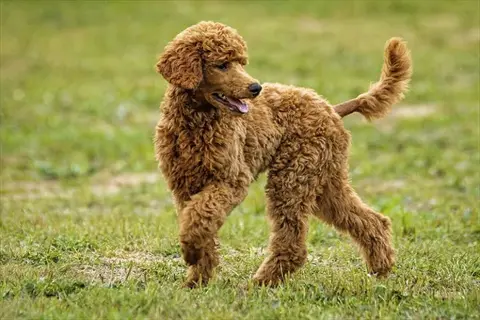
Poodle (Toy, Miniature, Standard)
- Coat features tight curly textures that effectively trap dander and minimize shedding throughout your home environment requiring regular maintenance
- Professional clipping every four to six weeks maintains coat health preventing painful matting while supporting hypoallergenic qualities
- Extremely intelligent breed ranking among the easiest to train for family life through positive reinforcement methods
- Three size varieties provide adaptability whether living in small apartments or homes with spacious yards
- Hypoallergenic characteristics make them excellent companions despite requiring consistent grooming appointments every month
- Playful temperament works well with children though supervision remains important during energetic play sessions
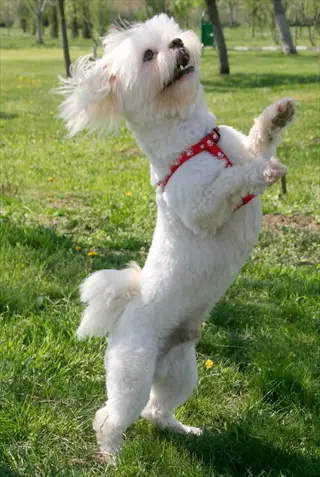
Bichon Frise
- Fluffy white cotton-like coat produces minimal dander but requires thorough daily brushing sessions to prevent stubborn tangles
- Special shampoos and veterinary skin checks help manage common skin allergies affecting this cheerful breed
- People-oriented personality thrives on human interaction making them ideal companions for families or seniors
- Moderate exercise needs satisfied with short daily walks and indoor play sessions using puzzle toys
- Compact size under eighteen pounds suits apartment living with limited indoor space availability
- Professional grooming every four weeks maintains their distinctive rounded appearance and coat health
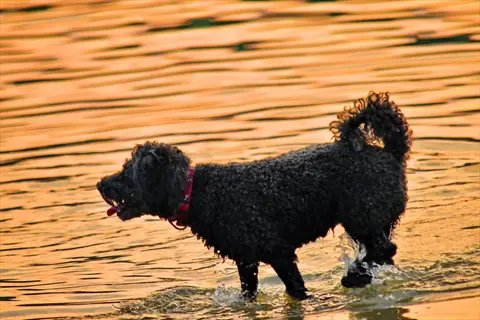
Portuguese Water Dog
- Curly or wavy waterproof coat requires weekly brushing to prevent stubborn mats and professional clipping monthly
- Energetic breed needing sixty minutes minimum of vigorous exercise daily including swimming opportunities
- High intelligence makes them excel at dog sports requiring consistent mental stimulation activities
- Medium-sized build weighing thirty-five to sixty pounds suits active families with older children
- Hypoallergenic coat produces less dander than most breeds despite needing frequent grooming care
- Made famous as the Obama family pet demonstrating their loyal and trainable nature
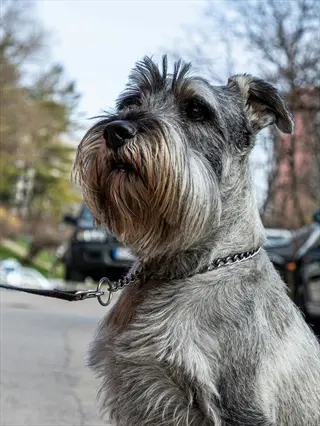
Schnauzer (Miniature, Standard, Giant)
- Distinctive wiry double coat needs hand-stripping or clipping every eight weeks controlling loose hairs effectively
- Alert protective nature makes them excellent watchdogs securing family homes through vigilance
- Three sizes available from ten-pound miniatures to eighty-five-pound giants accommodating different living situations
- Regular brushing several times weekly prevents mats developing in their distinctive facial furnishings
- Moderate energy levels require daily walks plus interactive playtime preventing destructive boredom behaviors
- Minimal shedding occurs though their beard requires wiping after meals preventing food stains
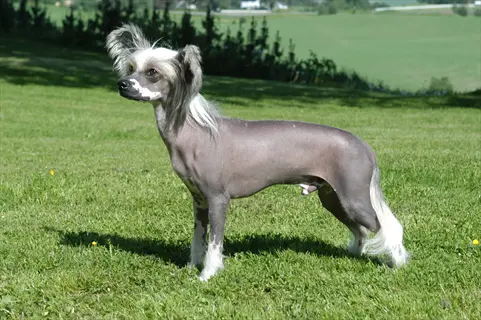
Chinese Crested
- Hairless and powderpuff varieties both feature minimal shedding tendencies requiring different care approaches
- Hairless version needs regular sunscreen application and moisturizing protecting sensitive skin from sun damage
- Small size under thirteen pounds makes them ideal lap dogs for apartment dwellers
- Both varieties require gentle brushing techniques and regular baths maintaining overall skin health
- Affectionate temperament bonds closely with owners though reserved behaviors may appear around strangers
- Sensitivity to cold temperatures demands sweater use during winter months ensuring comfort
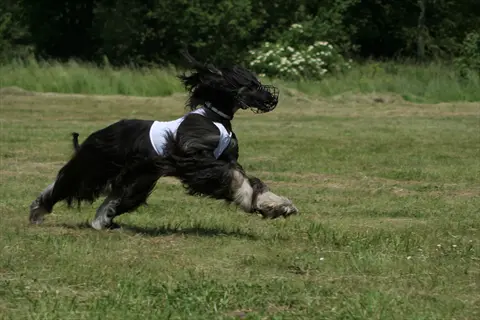
Afghan Hound
- Long silky flowing coat requires daily thorough brushing sessions preventing painful tangles and matting
- Dignified independent personality suits experienced owners appreciating their elegant and aloof nature
- Professional grooming every six weeks maintains luxurious coat appearance supporting minimal shedding
- Tall slender build requires soft orthopedic bedding preventing pressure sores developing on joints
- Secure fencing proves essential since strong prey drive triggers chasing instincts unexpectedly
- Despite luxurious coat length minimal shedding occurs compared with other long-haired breeds
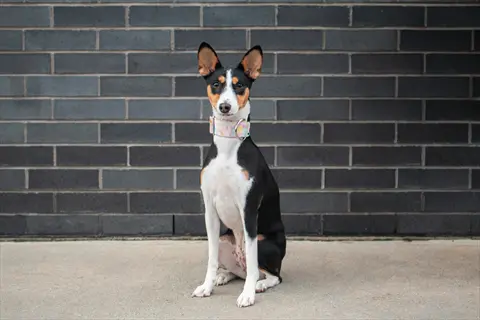
Basenji
- Short fine coat requires only weekly brushing making them low-maintenance grooming companions
- Unique yodeling vocalization replaces conventional barking suiting noise-sensitive living environments well
- Cat-like grooming habits help keep them clean requiring minimal owner assistance regularly
- High prey drive necessitates leash walking and secure containment solutions at all times
- Intelligent but independent nature demands patient training approaches using positive reinforcement methods
- Moderate exercise needs met through daily walks and mentally stimulating puzzle toys
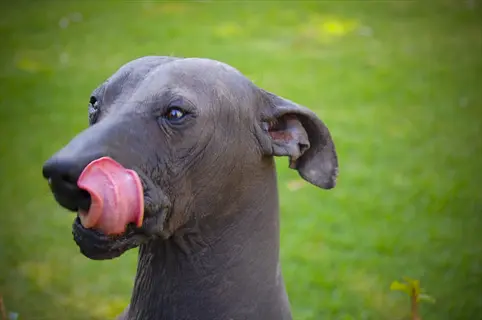
Xoloitzcuintli (Xolo)
- Ancient Mexican breed features hairless and coated varieties with minimal shedding characteristics
- Hairless version requires regular moisturizing and sunscreen applications protecting delicate skin outdoors
- Naturally warm skin temperature provides comforting companionship particularly in colder climate regions
- Loyal protective instincts demand early socialization preventing overprotectiveness around family guests
- Available in toy miniature and standard sizes ranging from ten to fifty pounds
- Sensitive nature responds best to gentle consistent training routines avoiding harsh corrections
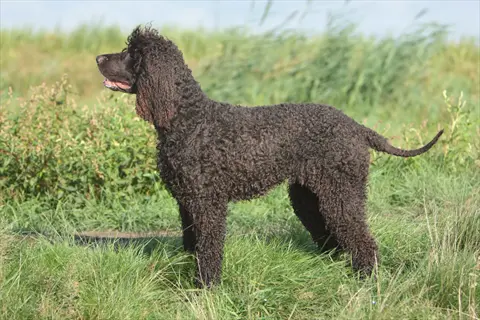
Irish Water Spaniel
- Tight liver-colored curls require weekly brushing preventing painful matting especially behind ears
- Hypoallergenic coat effectively traps dander making them suitable companions for allergy sufferers
- Athletic build demands vigorous daily exercise including swimming opportunities whenever possible
- Distinctive rat tail and topknot need regular trimming maintaining proper breed profile standards
- Playful clownish personality provides entertaining companionship for active families with children
- Regular ear cleaning prevents infections common among water-loving breeds enjoying aquatic activities
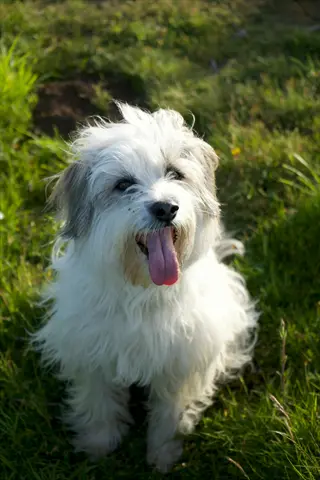
Coton de Tulear
- Cotton-like fluffy coat needs daily brushing preventing tangles forming close to sensitive skin
- Cheerful affectionate temperament thrives through human interaction and inclusive family activities
- Minimal dander production makes them excellent choices for allergy-sensitive household environments
- Small size under fifteen pounds suits apartment living needing only moderate exercise
- Professional grooming maintains their fluffy appearance needing appointments approximately every six weeks
- Early socialization prevents separation anxiety developing in this highly people-oriented companion breed
Hypoallergenic Dogs Explained
Let's clarify the important terminology surrounding the term "hypoallergenic". The term "dander" means microscopic flakes of skin that all dogs produce. This dander contains a protein called "Can f 1". Can f 1 is responsible for most allergic reactions. The term "truly hypoallergenic" means lower amounts of allergens, not no allergens. I have tested many breeds and always explain this distinction to families.
Two main sources of allergy triggers are involved. Salivary allergens are shed by dogs licking their coats. Dander allergens are introduced into the air in the form of cells desquamating from the skin. Reactions to salivary allergens often occur faster than those to dander allergens, which require a constant build-up in the house. Finding out what your individual sensitivities to allergens are will help control the symptoms effectively.
No dog breed is completely allergen-free. Every dog produces Can f 1 either in dander or saliva. Curly-coated breeds, like Poodles, trap more allergens near their skin. Hairless breeds continue to shed skin cells. This is a scientific fact that people with allergies should accept.
Coat type is a direct determinant of allergen distribution. Curly coats restrict the distribution of dander through reduced shedding. Double coats tend to release allergens as they shed seasonally. Hairless breeds have skin exposed. Selecting a type of coat can help reduce the distribution of allergens. I suggest clients consider this factor when adopting an animal.
Allergy Triggers in Dogs
- Dander consists of microscopic skin flakes carrying the Can f 1 protein that triggers most allergic reactions
- Saliva contains similar allergens that spread when dogs lick their fur during self-grooming behaviors
- Urine contains concentrated proteins that can become airborne when dried on surfaces
- Airborne dander particles can remain suspended in home environments for hours after disturbance
- Allergen levels vary significantly between individual dogs even within the same breed
- Puppies typically produce fewer allergens than adult dogs though levels increase with age
Hypoallergenic Reality Check
- No dog breed is completely hypoallergenic as all produce some Can f 1 protein in dander or saliva
- Low-shedding breeds reduce airborne allergens by trapping dander in their coats rather than releasing it
- Individual sensitivity varies greatly with some people tolerating certain breeds better than others
- Hypoallergenic claims refer to reduced allergen production not complete elimination
- Regular grooming significantly reduces allergen levels more than breed selection alone
- Allergy sufferers should spend time with a breed before committing to adoption
Coat Type Differences
- Curly coats like Poodles trap dander close to the skin limiting its release into home environments
- Hairless breeds eliminate fur allergens but still produce dander from their exposed skin surfaces
- Double-coated breeds shed seasonally releasing large amounts of allergen-loaded undercoat
- Wire-haired terriers have dense undercoats that minimize shedding but require special grooming
- Single-coated breeds like Yorkies lack an undercoat reducing overall allergen dispersal
- Corded coats like Komondors physically contain dander but require intensive maintenance
Managing Allergen Exposure
- Regular bathing reduces active allergens on the dog's skin and coat surface significantly
- HEPA air filters capture airborne dander particles improving indoor air quality for sensitive individuals
- Designating pet-free zones like bedrooms creates safe spaces with reduced allergen concentrations
- Washing dog bedding weekly in hot water eliminates accumulated dander reservoirs
- Hard flooring surfaces reduce allergen retention compared to carpeted areas in homes
- Frequent hand washing after pet contact minimizes accidental allergen transfer
Testing Your Sensitivity
- Spend 1-2 hours interacting with a specific breed before adoption to gauge personal reaction levels
- Allergists can perform IgE blood tests measuring sensitivity to Can f 1 proteins
- Combining breed selection with environmental controls often enables successful pet ownership
- Temporary fostering provides real-world exposure testing in your living environment
- Allergy medications like antihistamines may help manage minor reactions to compatible breeds
- Consulting allergists for immunotherapy options provides long-term management solutions
Grooming Essentials Simplified
Correct grooming begins with the correct types of brushes for each coat type. Slicker brushes are best for curly coated breeds like Poodles to prevent matting. Pin-type brushes are best for silky Havanese coats. Bristle brushes work well for the distribution of oils in short coats. I always use brushes that are suitable for the coat type for the best results.
Grooming techniques can be very different from one coat to another. Curly coats are groomed section by section so the brushes can reach the skin. Wiry terrier coats must have professional hand stripping every 8 to 12 weeks. Hairless breeds must have soft cloths used to massage them in circular motions so they don't become irritated. Each method avoids skin problems when done right.
Besides technique, frequency is important. Brushing the curly coat every other day is required for lacunose breeds, while hairless breeds need care daily. Use shampoo that is both tearless and hypoallergenic for dry skin on the areas around the eyes. It may be as well to test the products on small patches of skin initially to avoid any undesirable reactions.
Safety is paramount in grooming. Use a cotton ball in the eyes during baths. Check the water temperature very carefully. Always support joints when lifting small breeds. This will prevent injury. I have seen how these precautions can build trust between the dog and the owner during the grooming process.
Brushing Tools
- Slicker brushes remove loose hair from curly coats like Poodles and Portuguese Water Dogs effectively
- Pin brushes gently detangle silky coats on breeds like Yorkies without damaging hair
- Bristle brushes distribute natural oils through short coats like Basenjis for healthy shine
- Undercoat rakes reach deep layers in double-coated breeds during seasonal shedding periods
- Grooming gloves provide massage benefits while collecting loose hair during petting sessions
- Rotate brush types monthly to prevent wear and maintain optimal grooming performance
Coat-Specific Techniques
- Curly coats require section-by-section brushing to prevent matting behind ears and legs
- Wiry coats need hand-stripping every 8-12 weeks to maintain texture and color
- Hairless breeds need gentle circular motions with soft cloths to avoid irritation
- Long coats require daily attention to prevent tangles forming close to the skin
- Use detangling sprays before brushing severely matted areas to minimize discomfort
- Always brush in direction of hair growth to avoid breaking delicate strands
Bathing Essentials
- Hypoallergenic shampoos prevent skin reactions in sensitive breeds like Chinese Cresteds
- Medicated shampoos treat specific conditions like fungal infections or allergic dermatitis
- Conditioners maintain moisture balance especially important for hairless breeds' delicate skin
- Ear cleaning solutions prevent infections in floppy-eared breeds like Coton de Tulear
- Tear stain removers keep facial fur bright on light-colored breeds like Maltese
- Always rinse thoroughly ensuring no residue remains that could irritate skin
Professional Maintenance
- Schedule clipping every 4-6 weeks for continuous growth breeds like Poodles
- Hand-stripping maintains wiry coats on terriers every 8-12 weeks seasonally
- Sanitary trims prevent hygiene issues in long-haired breeds monthly
- Nail grinding avoids painful splitting compared to traditional clipping methods
- Dental scaling prevents periodontal disease during regular grooming appointments
- Anal gland expression prevents impaction when performed by professionals quarterly
Sensitive Skin Care
- Fragrance-free moisturizers prevent dryness in hairless breeds like Xolos daily
- Dog-safe sunscreen SPF 30+ protects exposed skin during outdoor activities
- Aloe vera gels soothe sunburns or minor irritations on sensitive areas
- Antibacterial wipes clean skin folds on breeds like Shar-Peis weekly
- Cooling mats provide relief after grooming sessions for heat-sensitive breeds
- Always patch-test new products on small skin areas before full application
Health Considerations
Non-shedding breeds face different health challenges. Hairless dogs such as Xolos require daily sunscreen to prevent skin cancer. Breeds with heavy coats may develop hot spots. Regular veterinary examinations will discover these problems early. I schedule bi-annual examinations for my own dogs.
Genetic conditions require special consideration. Poodles frequently acquire hip dysplasia, which requires joint supplements. Yorkies may have liver shunt issues requiring special diets. Portuguese Water Dogs may develop Addisonian Disease. DNA testing can help identify these problems long before the symptoms develop.
Environmental factors impact skin health. Cold temperatures affect hairless breeds, who need sweaters below the temperature of 50 degrees F. Apply additional warmth with indoor heat, which dries the animals, and humidifiers are necessary. Pollen causes allergic responses in the spring. The careful use of filtered bathing systems is essential when using hard water, which irritates the skin. I advise clients of these changes.
Preventive measures include omega supplements for skin barrier function, monthly heartworm prevention for cardiopulmonary health, weight management for the prevention of orthopedic stress, and dental care for the reduction of periodontal disease. These protocols will ensure that the non-shedding breeds remain healthy throughout their lifetime.
Skin Conditions
- Hairless breeds like Xolos and Chinese Cresteds require daily sunscreen application to prevent sunburn damage
- Allergic dermatitis affects Bichon Frises needing hypoallergenic diets and regular medicated baths
- Acne appears on hairless breeds' chins requiring antibacterial wipes and topical treatments
- Dry skin in winter months demands fragrance-free moisturizers applied after bathing routines
- Folliculitis infections require veterinary-prescribed antibiotics and antiseptic shampoos
- Regular skin checks identify early lesions or abnormalities needing professional attention
Genetic Predispositions
- Poodles and Schnauzers inherit hip dysplasia requiring joint supplements and weight management
- Portosystemic shunts affect Yorkies needing specialized diets and surgical consultation
- Progressive retinal atrophy causes blindness in Irish Water Spaniels necessitating annual eye exams
- Luxating patellas plague small breeds like Maltese requiring controlled exercise and supplements
- Addison's disease appears in Portuguese Water Dogs needing lifelong hormone replacement therapy
- Genetic testing before breeding reduces transmission of hereditary conditions across generations
Dental Issues
- Toy breeds like Yorkies develop periodontal disease without daily tooth brushing routines
- Special dental diets reduce plaque buildup in breeds prone to dental abnormalities
- Annual professional cleanings under anesthesia prevent tooth loss and systemic infections
- Chew toys with ridges clean teeth naturally during play sessions for dental maintenance
- Bad breath indicates potential infections needing veterinary examination and treatment
- Water additives reduce oral bacteria between brushing sessions for improved dental health
Environmental Factors
- Cold sensitivity in hairless breeds demands sweaters below 50°F (10°C) outdoor temperatures
- Indoor heating dries coats requiring humidifiers maintaining 40-60% humidity levels
- Pollen allergies trigger skin reactions during spring needing antihistamines and foot baths
- Hard water mineral deposits irritate skin requiring filtered bathing water systems
- Chemical lawn treatments stick to paw pads needing post-walk rinsing to prevent ingestion
- Air pollution exacerbates respiratory issues in flat-faced breeds requiring indoor air purifiers
Preventive Care
- Annual blood tests detect early organ dysfunction before clinical symptoms appear
- Omega-3 supplements improve skin barrier function reducing dermatitis flare-ups
- Monthly heartworm prevention avoids mosquito-borne parasites damaging cardiovascular health
- Vaccination schedules tailored to regional disease risks prevent infectious outbreaks
- Weight management prevents orthopedic stress with portion control and regular weigh-ins
- Biannual veterinary exams monitor chronic conditions and adjust treatment plans proactively
Choosing Your Perfect Match
Choose breeds that fit your lifestyle to succeed. Apartment dwellers should look at a small dog like the Maltese or the Havanese that will require less space. Families with children do well with Poodles or Coton de Tulear that are known for their gentle dispositions. Energetic Portuguese Water Dogs do best with active owners.
Individuals allergic to dogs should test reactions carefully. Spend time with breeds before bringing an animal home. Poodles trap dander in their curls, while Xolos expose skin directly. Therefore, combine breed choice with HEPA filters and cleaning routines. I always recommend trying a few visits first.
Take space requirements to heart. Larger breeds such as the Giant Schnauzer need to be able to move around. One dog may only need 20 minutes of indoor play, and another may require a full 60 minutes of running. Matching activity levels dramatically reduces behavioral issues. Be honest about the time you have available.
Seek reliable sources if you wish to adopt. Select AKC-inspected breeders for purebreds and health certificates. Breed-specific rescues will have adult dogs with known tendencies. Beware of backyard breeders selling teacup sizes. Always ask for veterinary records and visit the parents.
For Apartment Living
- Maltese thrive in small spaces needing only 20-30 minutes of daily indoor play activities
- Havanese adapt well to limited areas requiring moderate exercise through interactive toys
- Chinese Cresteds suit studio apartments with minimal space due to their small size
- Bichon Frises need regular short walks but satisfy most energy indoors with play sessions
- Yorkshire Terriers fit perfectly in urban settings with easy access to outdoor potty areas
- Prioritize breeds under 20 pounds requiring minimal outdoor exercise for best results
For Families with Children
- Poodles of all sizes tolerate child handling well when properly socialized early
- Coton de Tulear has cheerful temperament ideal for households with energetic kids
- Portuguese Water Dogs bond strongly with children through interactive play activities
- Miniature Schnauzers protectively watch over kids while being sturdy enough for play
- Bichon Frise enjoys participating in family activities without overwhelming small children
- Avoid independent breeds like Afghan Hounds if seeking highly interactive family pets
For Active Owners
- Standard Poodles need 60+ minutes daily exercise including running or swimming sessions
- Irish Water Spaniels excel at hiking and field activities with high endurance levels
- Portuguese Water Dogs require challenging tasks like dock diving to stay mentally engaged
- Giant Schnauzers make excellent jogging partners for owners covering long distances
- Wirehaired Pointing Griffons thrive on hunting trips or rigorous outdoor adventures
- Match breed energy to your activity level to prevent destructive boredom behaviors
For Allergy Sufferers
- Test personal reaction to breeds like Poodles with tightly curled dander-trapping coats
- Hairless Xolos produce skin dander requiring controlled exposure trials before adoption
- Basenjis' minimal grooming needs reduce allergen dispersal in home environments
- Consider coated vs hairless varieties based on specific allergy triggers (dander vs saliva)
- Spend 2+ hours interacting with potential breeds before making adoption decisions
- Combine breed selection with HEPA filters and cleaning routines for best results
Adoption Sources
- Reputable breeders provide health clearances for genetic conditions in purebreds
- Breed-specific rescues offer adult dogs with known temperaments and grooming needs
- Beware of 'teacup' or non-standard sizes often having more health complications
- Request veterinary records and meet parent dogs when possible for temperament clues
- Foster-to-adopt programs allow trial periods ensuring compatibility before commitment
- Always verify AKC certification or equivalent pedigree documentation for purebreds
5 Common Myths
Hypoallergenic dogs are thoroughly safe and produce no allergic reaction in any person who is sensitive.
All dogs produce Can f 1 allergens in their dander and saliva, but the hypoallergenic types may give off less allergens into the environment. Susceptibilities vary greatly in different individuals depending upon the reaction of the individual system and the exposure. No breed is free from danger and those afflicted with allergies should always test exposures before adopting the breed.
Hairless breeds do not need grooming because they have no fur to shed.
The hairless breeds, such as Xolos and Chinese Cresteds, require intensive skincare that includes daily moisturizing and sunscreen applications to protect exposed skin. The missing fur layer makes them even more susceptible to sunburn, acne, and environmental irritants, requiring more frequent bathing and specialized grooming needs than the coated breeds.
Non-shedding dogs are low energy and apt for apartment conditions automatically.
Many non-shedding breeds like Portuguese Water dogs and Standard Poogles require 60+ minutes of vigorous exercise per day. Their energy levels are dependent on breed purpose (hunting, herding, working, sporting etc.) rather than by their coat type. Sporting and working dogs require vast amounts of physical and mental exercise, irrespective of whether or not they shed.
All terrier breeds shed the same amount because they have the same type of coat texture.
The shedding varies considerably among terriers. Wire-haired breeds such as the Miniature Schnauzer have very little shedding because they have a dense undercoat; while shorthaired breeds such as Rat Terriers shed with each change of seasons. The composition of the coat will cause different dispersions of the allergens, necessitating certain grooming techniques for one breed or another, even though they may all appear alike on first examination.
Doodle mix breeds are guaranteed to be hypoallergenic through their poodle lineage and genetics.
Doodle shedding is entirely dependent on the unpredictable genetic combinations of poodles and shedding breeds. Many doodles receive their shedding coats from their non poodle parent but have ordinary allergen levels. No breeding can guarantee hypoallergenic results and each animal needs to be allergy tested individually instead of making hybrid assumptions.
Conclusion
Never forget that no dog breed is hypoallergenic, even if claims to the contrary are made. All dogs produce allergens, which are given off in dander or saliva. This is often exaggerated in ads. I have continuously corrected these misconceptions when talking with clients who are new pet owners.
Lifestyle compatibility is the key to long-term happiness for you and your dog! Matching energy levels and space requirements helps eliminate hurdles to happiness. Active breeds require a commitment to exercise. Calm breeds do better in a quieter, less active household. This compatible lifestyle promotes lasting relationships between families and pets!
Regular grooming is essential for non-shedding breeds. Curly coats require a regular clip. Hairless breeds need to have their skin cared for daily. Wire-haired breeds require professional stripping of the coat. Neglect of the grooming routine leads to the development of health problems. Continual care causes your companion to be happy and healthy.
Always give priority to health screening and allergy testing before adopting. Genetic testing reveals breed-specific risks. Allergy exposure trials prevent unpleasant surprises. These steps all ensure responsible pet ownership and set the stage for many happy years together.
External Sources
Frequently Asked Questions
What is the best non-shedding dog breed for families?
Poodles consistently rank as top family-friendly non-shedding dogs due to their intelligence, trainable nature, and three size options. Their curly coats trap dander effectively while their playful temperament adapts well to children when properly socialized.
Are non-shedding dogs completely hypoallergenic?
No breed is 100% hypoallergenic as all dogs produce allergens in dander and saliva. While non-shedding breeds like Portuguese Water Dogs release fewer allergens, sensitivity varies individually requiring exposure testing before adoption.
What are the grooming requirements for non-shedding dogs?
Regular grooming is essential: curly coats need clipping every 4-6 weeks, wiry coats require hand-stripping, and hairless breeds demand daily moisturizing. All types benefit from dental care and nail maintenance.
- Curly coats: Professional clipping every 4-6 weeks
- Hairless breeds: Daily sunscreen and moisturizing
- All breeds: Regular dental care and nail trims
Do non-shedding dogs have special health considerations?
Many have breed-specific concerns: hairless breeds need sun protection, Poodles may develop hip dysplasia, and small breeds often have dental issues. Regular vet checks and genetic testing help manage these conditions.
Can non-shedding dogs live comfortably in apartments?
Smaller breeds like Bichon Frises and Maltese adapt well to apartments with moderate exercise needs. Ensure adequate indoor play space and consistent potty access for optimal comfort.
What is the most intelligent non-shedding dog breed?
Poodles rank among the smartest non-shedding breeds, excelling in obedience training and problem-solving. Their high intelligence requires regular mental stimulation through puzzle toys and training activities.
Are there non-shedding dogs suitable for active owners?
Energetic breeds like Irish Water Spaniels and Standard Poodles thrive with active owners. They require 60+ minutes of vigorous daily exercise through running, swimming, or hiking activities.
- Portuguese Water Dogs: Excel at dock diving
- Giant Schnauzers: Ideal jogging companions
- Wirehaired Pointing Griffons: Perfect for hunting trips
Do non-shedding dogs require different nutrition?
Skin and coat health demands omega-rich diets, especially for hairless breeds. All benefit from dental-formula kibble to reduce plaque buildup and specialized formulas for breed-specific sensitivities.
What is the lowest maintenance non-shedding dog?
Basenjis require minimal grooming with their short coats and cat-like self-cleaning habits. Weekly brushing suffices, though their independent nature requires patient training approaches.
How should allergy sufferers choose a non-shedding breed?
Spend 2+ hours interacting with breeds like Xolos or Poodles to test reactions. Combine with environmental controls like HEPA filters and cleaning routines for optimal results.
- Test individual reactions to specific breeds
- Consider coated vs hairless varieties
- Implement air purifiers and cleaning routines

